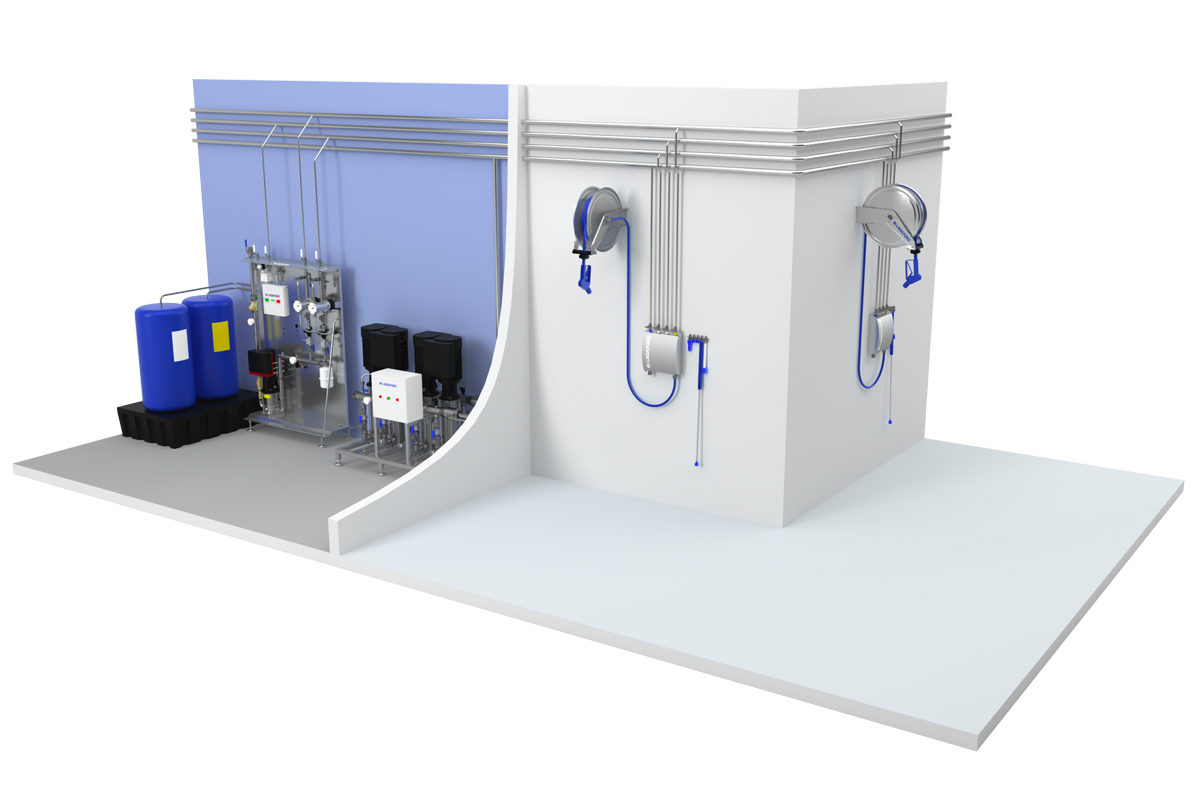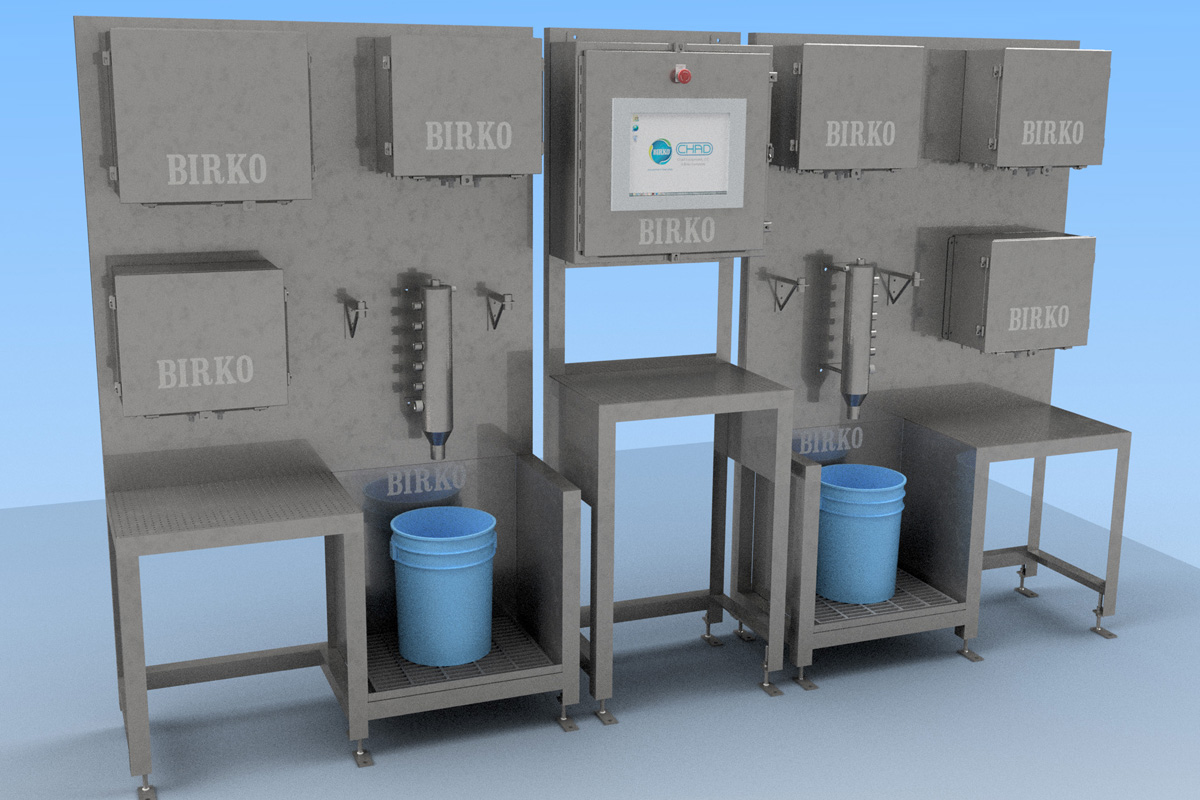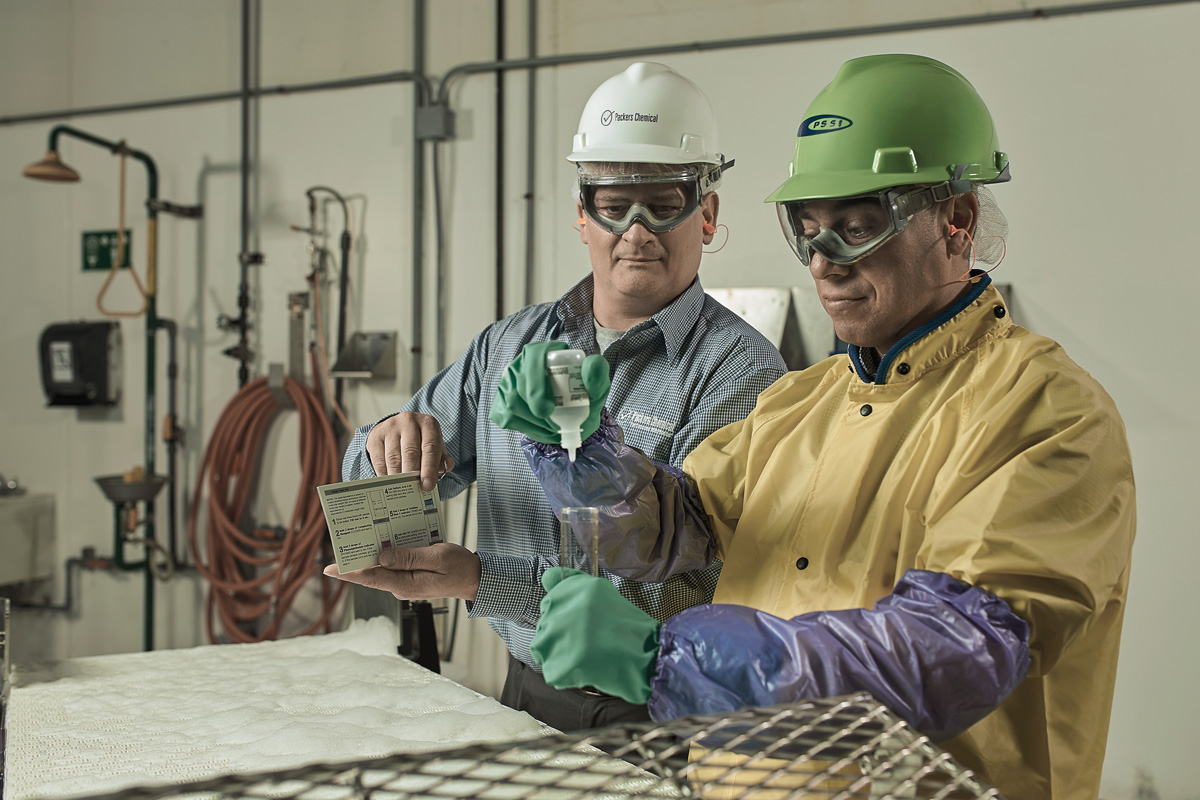Food safety can, and often does, hinge on cleanliness. That’s true in a home kitchen, where microbes can lurk on counters, cutting boards, utensils and unwashed hands, and it’s especially crucial in a high-stakes environment like a meat and poultry processing facility, which has vulnerabilities virtually at every nook and cranny.
Sanitary designs of equipment has helped reduce, or at least address, vulnerabilities related to risks from pathogens, pests and allergens, among other contaminants. Improved cleaning materials, technologies and applications also help knock down hurdles to sanitation and food safety.
But there are some industry challenges impacting processors and suppliers seeking to make environments as clean as possible. “One of the big things on processors’ minds right now is labor, because of the low unemployment and other things going on in the climate in this country. Labor is difficult to come by,” reports Elis Owens, Ph.D., director of technical services for Birko, based in Henderson, Colorado.

Another challenge facing processors is compliance with ever-stringent regulations and standards. “There has been a new level of regulatory rules and regulations across the food supply that have challenged the industry to reevaluate its business and processes as it relates specifically to sanitation and food safety,” says Jim Whitehead, vice president of sales and marketing for Kieler, Wisconsin-based Packers Sanitation Services Inc. (PSSI), citing the Food Safety Modernization Act (FSMA) in particular. “Overall, it has led to a higher level of internal and external environmental and finished product sampling to test for any traces of contamination that could cause food-related illnesses.”
At a time of tight labor and enhanced regulatory scrutiny, meat and poultry companies are contending with the ongoing push to streamline operations. “Processors are always looking for efficiencies, and for ways to take costs out of sanitation,” Owens notes.
Efficiency also spans the use of energy and natural resources. “People want to reduce the amount of water in their facilities. A lot of the water used on plants is used during sanitation,” Owens points out. Birko has worked on a system that reduces the amount of water needed for sanitation, as well as other greener methods of sanitation and more earth-friendly products, including sodium-free sanitation and process chemicals and a line free of 2-butoxy ethanol and diethanolamine.
Beyond challenges and issues, other factors are shaping essential sanitation practices in processing plants, including more positive developments. “There are also significant advancements in technology and science that are impacting the industry, specifically related to genome sequencing technology,” Whitehead notes. “This DNA-type tracking of contamination enables much more precise tracking of the specific location of contamination. The awareness of this type of technology and the potential consequences has made the industry more hypervigilant to test more themselves to enhance their own food safety programs.”

Sanitation 101
Whether in a new greenfield facility, during an upgrade or as part of a comprehensive safety review, there are some sanitation essentials for processors looking to ensure the safety of their products, employees and operations. For one thing, plants must have pre-operational sanitation standard operating procedures (SSOPs) and operational SSOPs and keep a daily log or tracking of the sanitation procedures in those plans.
Owens weighs in on the importance of prioritization in any sanitation approach or procedure. “I would say that people should start thinking about sanitation very early in the planning process. Ask questions like ‘Do I want centralized sanitation?’, ‘How does my equipment layout relate to drains in the facility?’, ‘Do we have access to make it easy to clean all of the equipment?’, or ‘How many hoses do I need, and how many sanitation stations?’ Don’t make cleaning or sanitation and afterthought,” he remarks.
Whitehead echoes that early-and-often approach. “Proper sanitary design starts at the very beginning. The processors of the future should have their sanitization partner at the table when discussing the initial facility and equipment design. Everything from the chemical room plan, to the design of drains, configuration of the water system and water drop locations, as well as the equipment design play an impactful role in the overall safety and sanitization process,” he advises.

A better clean
Sanitation suppliers, for their part, continually work on solutions to help processors devise solutions as easily as possible and to improve and upgrade when needed.
Many of those solutions address the top concerns of today’s processors. To help ease labor-related issues, for example, Birko has designed a doorway boot scrubber to be easily taken apart without the need for tools. “It’s easier and will save labor,” Owens notes.
Another example is Birko’s new line of Lagafors sanitation equipment available under its brand. “This is a new semi-automated, semi-centralized sanitation system that will make the actual job of cleaning and sanitation more efficient as well,” Owens explains, noting that the system includes features like wall-mounted chemical dispensing systems and hoses and sanitation tools that permanently hang on plant walls. “It’s all right there, immediately available for use.” In addition to less labor, the system reduces water and chemical use, allowing plants to lower their sanitation operating expenses by as much as 35 percent, he adds.
Other sanitation suppliers have developed new products aimed at both employee safety and food safety. For example, Best Sanitizers, Nevada City, California, recently added a surface sanitizer free of quaternary ammonium (linked to asthma in some studies) for cleaning and sanitizing hard, non-porous surfaces throughout a processing plant.
Meanwhile, to help processors contain costs, Birko has developed a blend-on-site sanitation system designed to save users time and money. “By shipping more concentrated precursors, we’re not having to ship as much water, and that reduces the number of chemical containers that have to be shipped to the plant,” Owens adds.
Technology is enabling superior sanitation too, by way of sanitation checks. PSSI, for example, offers real-time data monitoring and reporting across its sanitation sites. “This process starts by defining science-based, measurable KPIs that are monitored and recorded minute-by-minute during every cleaning with real-time notifications when something isn’t correct,” explains Whitehead, who points to assessments like water temperature monitoring, water pressure, time related to the sanitation window, and concentrations of detergents and sanitation solutions that can significantly impact the overall sanitization effectiveness.


